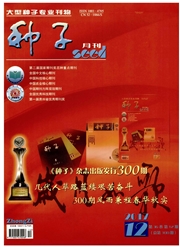

 中文摘要:
中文摘要:
耕作层是人类为了栽培作物,利用工具对土壤进行扰动的深度层。耕作层的结构和厚度决定了作物的生存环境及养分和水分的供给。随着对粮食需求的不断增加,培育一个肥沃而深厚的耕作层,提高土壤地力得到了越来越多人的关注。文章综合分析了耕作层的演变和功能及其对作物根系生长和产量的重要意义,由此提出了粘质土壤(粘粒含量〉35%)的适宜耕作层深度为0~35 cm,沙质土壤为0~20 cm;综述了秸秆和有机肥还田在培育土壤耕作层方面的研究进展。随着种植结构的多元化和农用机械的不断更新,对未来土壤耕作层培育的技术模式进行了展望,即建立集成作物轮作、有机物料还田、耕作强度和频度的综合技术模式,旨在为合理耕作层培育提供理论支撑。图1,参49。
 英文摘要:
英文摘要:
The soil cultivated layer is that human activity disturbed the depth of soil by tools in order to cultivate crops. The structure and depth of soil cultivated layer determined the habitat and supply of nutrient and water for crop. The construction of fertile and deep cultivated soil layer and improvement of soil fertility were attracting more and more attention with the increased demand for food. The evolution and function of soil cultivated layer and its effect on crop root and yield were reviewed comprehensively, suitable depths of cultivated layer were suggested for clay soil (clay content 〉 35% ) with 0 - 35 cm depth and sandy soil with 0 - 20 cm depth based on a- bove mentioned. The influence of straw and organic matter incorporation on soil cultivated layer was discussed. The prospective of tech- nical patterns of soil cultivated layer, including the integrated technical pattern involving crop rotation, straw and organic matter incorporation, depth and frequency of soil tillage, which will provide relevant reference for the construction of suitable soil cultivated layer.
 同期刊论文项目
同期刊论文项目
 同项目期刊论文
同项目期刊论文
 期刊信息
期刊信息
